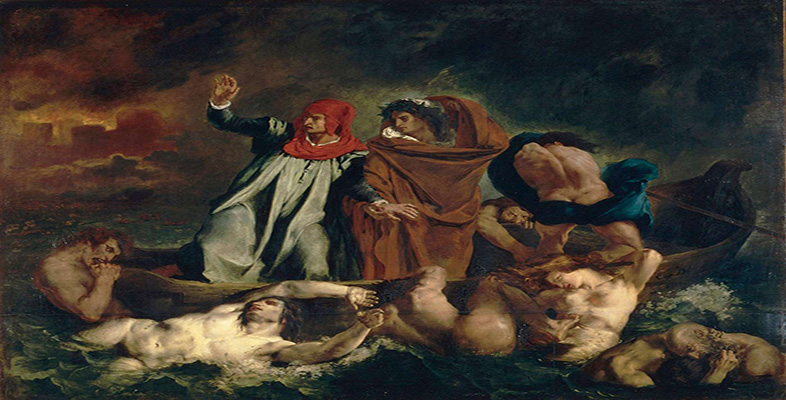2.8 Colour and light – exercise
Exercise 2
Compare the effects of colour and light in Sardanapalus with those in David’s Andromache mourning Hector (Plate 3). What similarities and differences can you see? (You may find it helpful to look also at Plates 9–12, preparatory works for Delacroix’s painting.)
Click to see Plate 3: Jacques-Louis David Andromache mourning Hector [Tip: hold Ctrl and click a link to open it in a new tab. (Hide tip)]
Discussion
Both paintings contain highly coloured areas, but these are more dominant in Delacroix’s work than in David’s. The boy in David’s painting wears a bright red cloak, but this is a relatively modest colour note in a generally moderately coloured work. In Delacroix’s painting there are darker, more restrained areas – for example, in the top right-hand corner – but (and this is a lot easier to see in the original) much of the canvas is dominated by red and gold so that the general effect is opulent. David’s quieter colour harmonies do not distract from the linear and intellectual appeal of the image. Delacroix uses colour in a more assertive way, not only to unify his painting but also to create an overall sensuousness.
In David’s painting the grieving Andromache is very dramatically highlighted by a spotlight effect, which helps to focus our attention. In Sardanapalus several figures are highlighted so that there is no obvious focal point. These patches of light, like many of the figures in the painting, which result from individual studies (see Plates 9–12), remain distinct and separate from one another. (This is incidentally a departure from the traditional academic process of using broad areas of light and shadow to unify a painting and direct the viewer’s eye towards a primary figure.) In David’s canvas Andromache provides a centre of emotional and visual interest, but the bright light falling on her unites with and flows into the gentler light illuminating Hector. In Delacroix’s painting it is areas of colour, rather than the suggestion of light falling on objects, that glue together the various areas of the composition.
Click to see Plate 9: Eugène Delacroix, sketch for The Death of Sardanapalus
Click to see Plate 10: Eugène Delacroix, sketch of a female nude
Click to see Plate 11: Eugène Delacroix's sketch for The Death of Sardanapalus,
